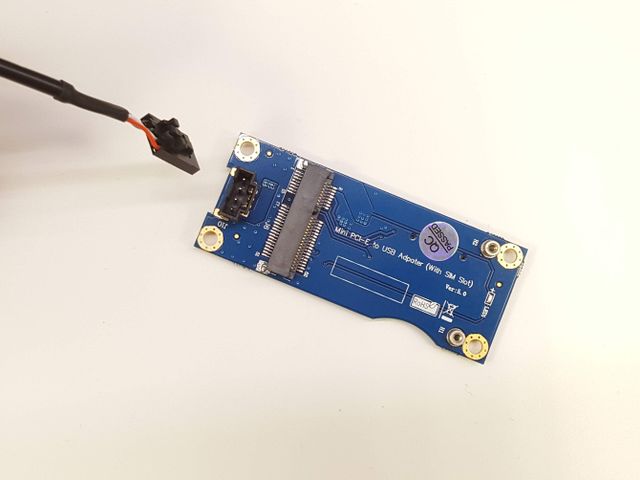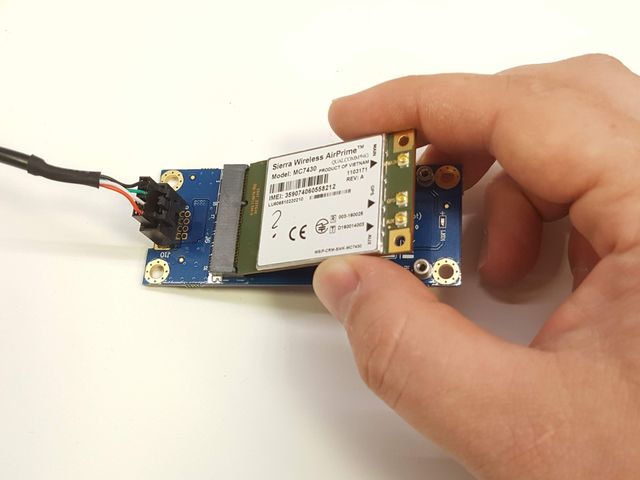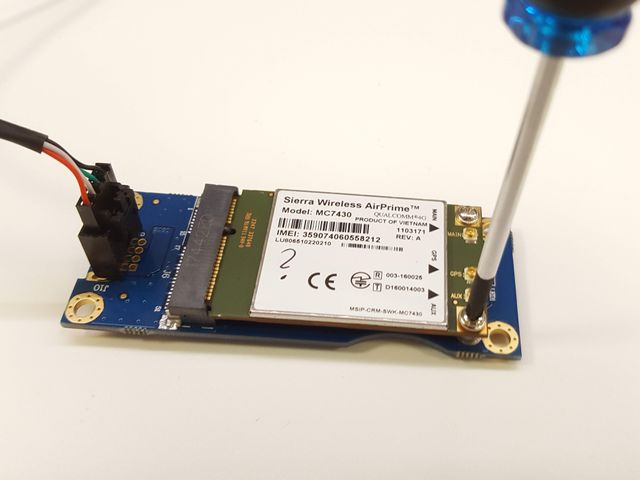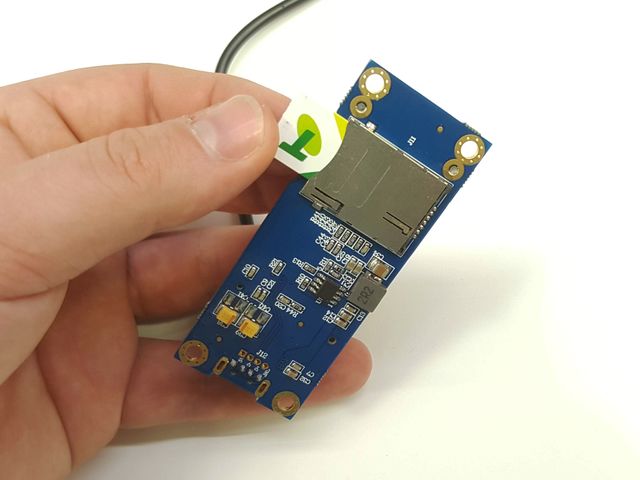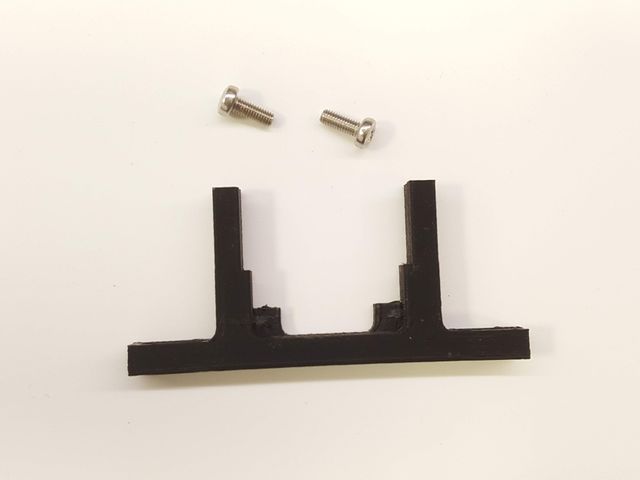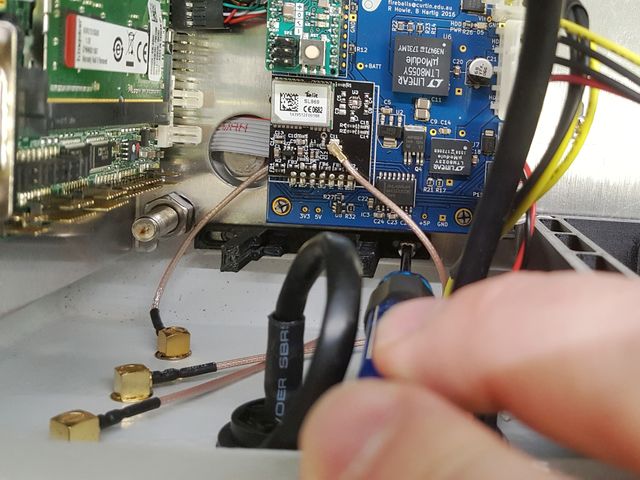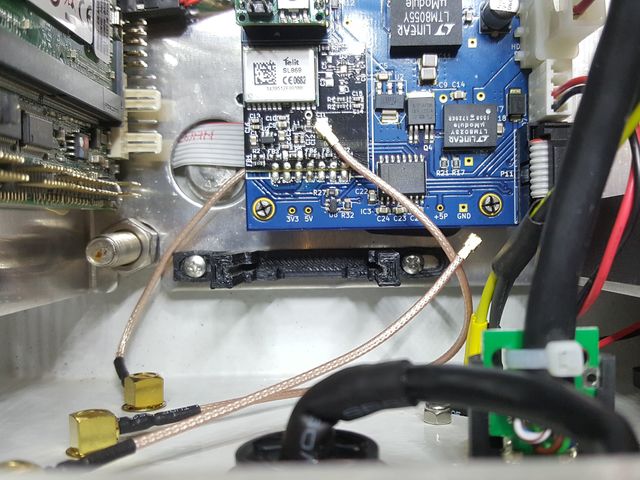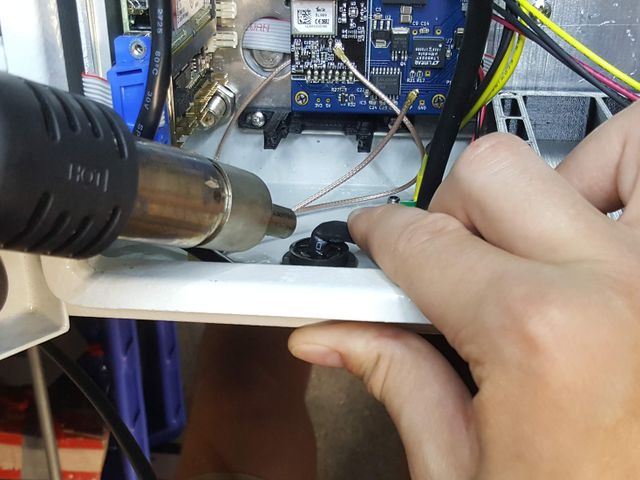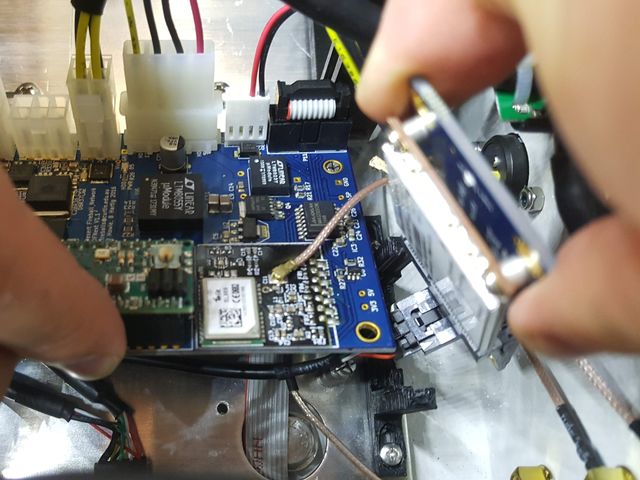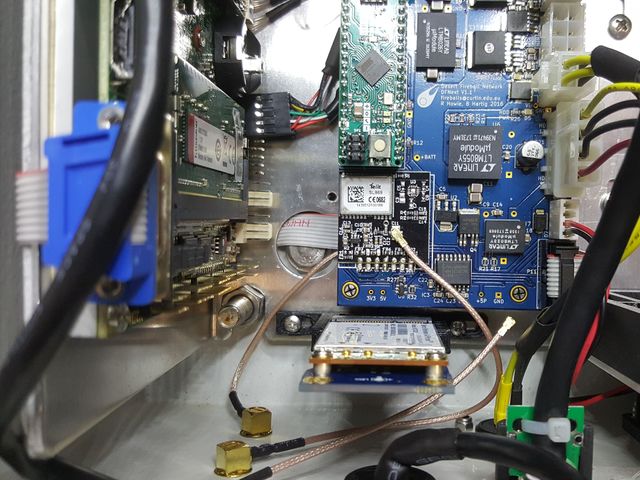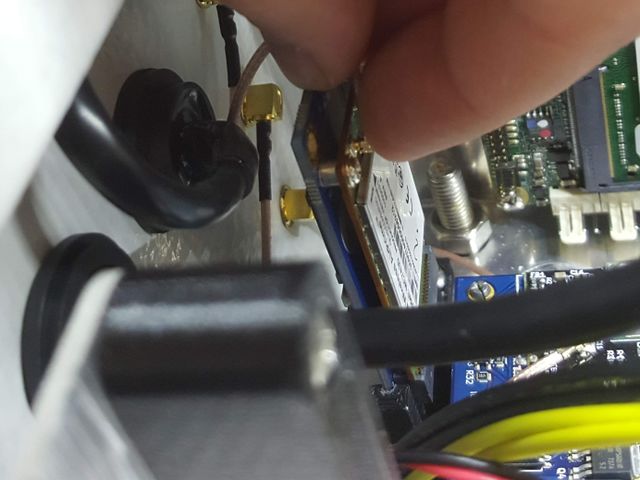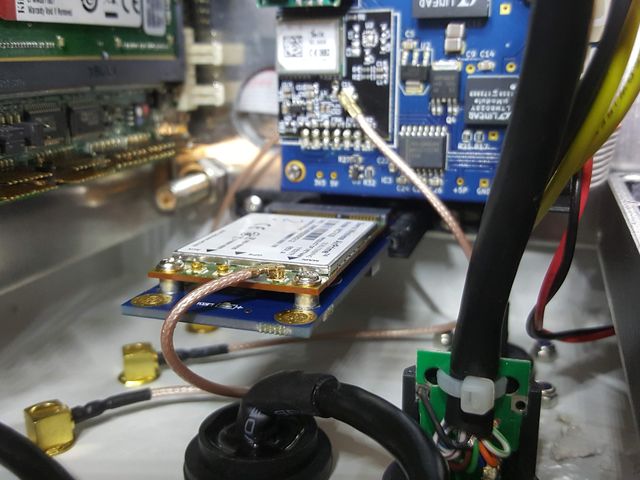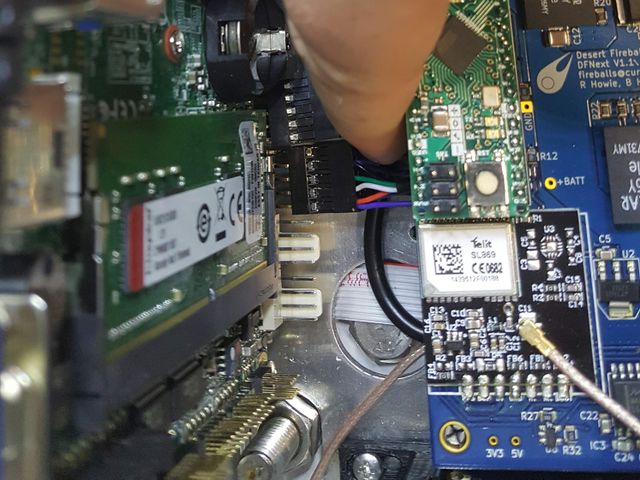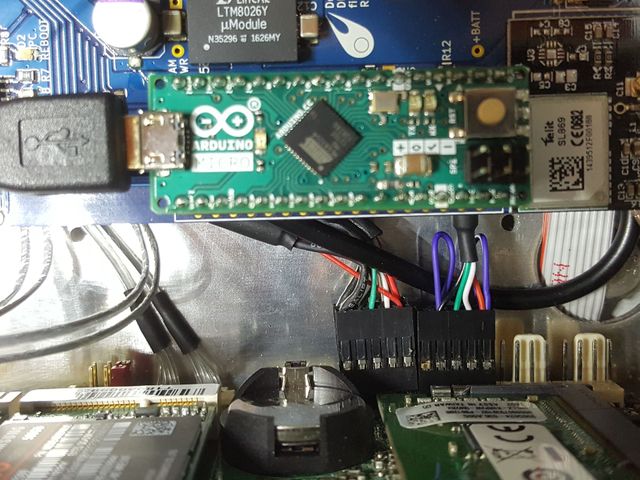Difference between revisions of "DFNEXT Modem Installation"
Robert Howie (talk | contribs) (Tag: visualeditor) |
Martin Cupak (talk | contribs) m |
||
| (14 intermediate revisions by 2 users not shown) | |||
| Line 1: | Line 1: | ||
| − | + | '''''Note: these instructions are for DFN camera systems equipped with blue PCB modem adaptor board (see images below). For DFN observatories with green PCB modem adaptor board please refer to [[DFN Modem Installation - Green card]].''''' | |
| − | + | The DFNEXT observatories usually ship without modems as many of them are deployed with WiFi or Ethernet connectivity and different areas of the world require different modems. | |
| − | The recommended modems are the [https://www.sierrawireless.com/-/media/iot/pdf/datasheets/sierrawireless_airprime_mc_series_datasheet.pdf Sierra Wireless AirPrime MC Series] MC7455 (for the Americas, Europe, the Middle East and Africa) and the MC7430 (for Asia Pacific including Australia). | + | If you wish to network your DFNEXT observatory via mobile broadband instead of WiFi or Ethernet you need to source a modem and request a modem installation care package from [[Getting Help|DFN Camera Help]]. You will also need a 2FF ("standard") sized SIM with an active data plan. |
| + | |||
| + | The recommended modems are the [https://www.sierrawireless.com/-/media/iot/pdf/datasheets/sierrawireless_airprime_mc_series_datasheet.pdf Sierra Wireless AirPrime MC Series] MC7455 (for the Americas, Europe, the Middle East and Africa) and the MC7430 (for Asia Pacific including Australia). It is also a good idea to verify that the selected modem will support the frequencies/bands used by your operator in the area. | ||
= Installation Steps = | = Installation Steps = | ||
Once you have the modem, installation care package (containing the modem adaptor board, USB cable, modem bracket and screws) and a SIM card, you can install the modem by following the steps bellow. | Once you have the modem, installation care package (containing the modem adaptor board, USB cable, modem bracket and screws) and a SIM card, you can install the modem by following the steps bellow. | ||
| − | [[File:Modem cable connector.jpg|none|thumb|Connect the modem USB cable to the modem.]] | + | [[File:Modem cable connector.jpg|none|thumb|Connect the modem USB cable to the modem.|640x640px]] |
| − | [[File:Insert modem.jpg|none|thumb|Insert the modem into the adaptor board.]] | + | [[File:Insert modem.jpg|none|thumb|Insert the modem into the adaptor board.|640x640px]] |
| − | [[File:Fasten modem.jpg|none|thumb|Press modem down and fasten with the two small screws.]] | + | [[File:Fasten modem.jpg|none|thumb|Press modem down and fasten with the two small screws.|640x640px]] |
| − | [[File:Modem bracket.jpg|none|thumb|Take the modem bracket and two large screws.]] | + | [[File:Insert sim.jpg|none|thumb|Insert the 2FF sized SIM into the spring loaded SIM card slot in the modem adaptor board.|640x640px]] |
| − | [[File:Screw in modem bracket.jpg|none|thumb|Fasten the modem bracket using the two large screws and the threaded holes below the PCB.]] | + | [[File:Modem bracket.jpg|none|thumb|Take the modem bracket and two large screws.|640x640px]] |
| − | [[File:Slide bracket to the right.jpg|none|thumb|Ensure the bracket is installed as far to the right as possible to allow the connector to clear the PCB standoff above the modem bracket.]] | + | [[File:Screw in modem bracket.jpg|none|thumb|Fasten the modem bracket using the two large screws and the threaded holes below the PCB.|640x640px]] |
| − | [[File:Bend usb cable using hot air gun.jpg|none|thumb| | + | [[File:Slide bracket to the right.jpg|none|thumb|Ensure the bracket is installed as far to the right as possible to allow the connector to clear the PCB standoff above the modem bracket.|640x640px]] |
| − | [[File:Install modem with connector under pcb.jpg|none|thumb|Lift one side of the PCB to clear the modem's USB connector which should face upwards.]] | + | [[File:Bend usb cable using hot air gun.jpg|none|thumb|If needed, use a hot air gun to bend the external USB connector cable out of the way of the modem.|640x640px]] |
| − | [[File:Installed modem.jpg|none|thumb|Firmly slide the modem into the bracket ensuring it reaches the bottom. (The slots in the bracket may require some filing.)]] | + | [[File:Install modem with connector under pcb.jpg|none|thumb|Lift one side of the PCB to clear the modem's USB connector which should face upwards.|640x640px]] |
| − | [[File:Attach gsm antenna pigtail to main antenna port.jpg|none|thumb|Attach the short GSM antenna pigtail to the main antenna port on the modem using your fingers or some needle-nose pliers.]] | + | [[File:Installed modem.jpg|none|thumb|Firmly slide the modem into the bracket ensuring it reaches the bottom. (The slots in the bracket may require some filing.)|640x640px]] |
| − | [[File:Rf cable connected.jpg|none|thumb|Ensure the U.FL connector is seated correctly.]] | + | [[File:Attach gsm antenna pigtail to main antenna port.jpg|none|thumb|Attach the short GSM antenna pigtail to the main antenna port on the modem using your fingers or some needle-nose pliers.|640x640px]] |
| − | [[File:Connect usb cable to pc.jpg|none|thumb|Tuck the excess USB cable under the PCB and connect the USB header connector to the PC.]] | + | [[File:Rf cable connected.jpg|none|thumb|Ensure the U.FL connector is seated correctly.|640x640px]] |
| − | [[File:Connected usb cables.jpg|none|thumb|Ensure that the USB header connector is well seated and that the adjacent connectors have not been knocked out.]] | + | [[File:Connect usb cable to pc.jpg|none|thumb|Tuck the excess USB cable under the PCB and connect the USB header connector to the PC.|640x640px]] |
| − | [[ | + | [[File:Connected usb cables.jpg|none|thumb|Ensure that the USB header connector is well seated and that the adjacent connectors have not been knocked out.|640x640px]] |
| + | |||
| + | = Network configuration = | ||
| + | |||
| + | Make sure the networking is configured correctly for a specific modem type and operator. | ||
| + | Please contact your service provider for details like AP name (example: "telstra.m2m" for Australian Telstra M2M plans), Password, Username and Phone (number) to dial. | ||
| + | |||
| + | The [[Mobile network configuration]] in the observatory PC operating system has moved to a separate wiki page. | ||
Latest revision as of 03:02, 8 February 2022
Note: these instructions are for DFN camera systems equipped with blue PCB modem adaptor board (see images below). For DFN observatories with green PCB modem adaptor board please refer to DFN Modem Installation - Green card.
The DFNEXT observatories usually ship without modems as many of them are deployed with WiFi or Ethernet connectivity and different areas of the world require different modems.
If you wish to network your DFNEXT observatory via mobile broadband instead of WiFi or Ethernet you need to source a modem and request a modem installation care package from DFN Camera Help. You will also need a 2FF ("standard") sized SIM with an active data plan.
The recommended modems are the Sierra Wireless AirPrime MC Series MC7455 (for the Americas, Europe, the Middle East and Africa) and the MC7430 (for Asia Pacific including Australia). It is also a good idea to verify that the selected modem will support the frequencies/bands used by your operator in the area.
Installation Steps
Once you have the modem, installation care package (containing the modem adaptor board, USB cable, modem bracket and screws) and a SIM card, you can install the modem by following the steps bellow.
Network configuration
Make sure the networking is configured correctly for a specific modem type and operator. Please contact your service provider for details like AP name (example: "telstra.m2m" for Australian Telstra M2M plans), Password, Username and Phone (number) to dial.
The Mobile network configuration in the observatory PC operating system has moved to a separate wiki page.
